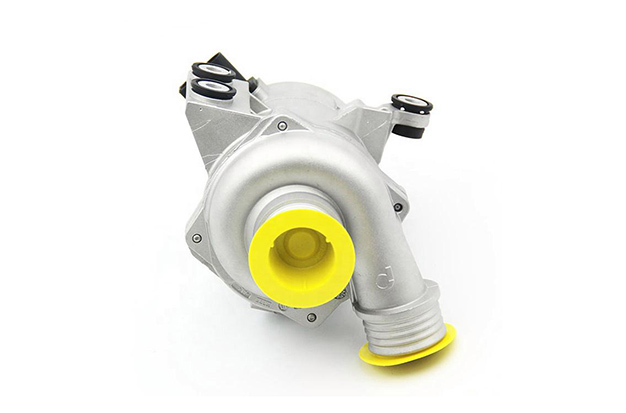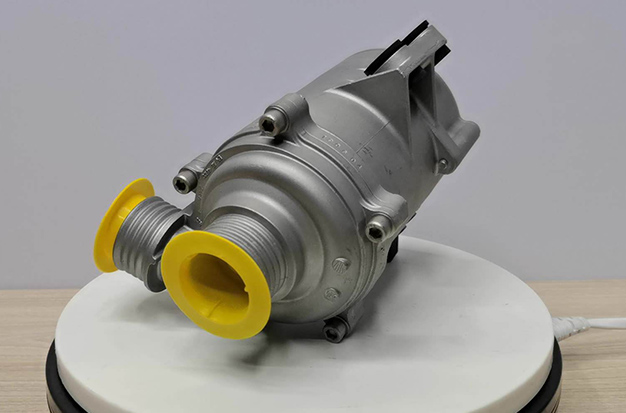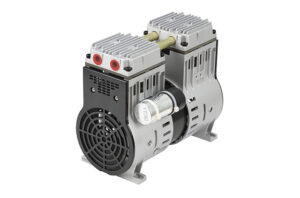
7 Signs Of A Bad Water Pump
The engine is cooled down by the water pump, which makes sure that coolant flows quickly through the cooling system. Here’s how to determine whether your water pump is bad.
What Is A Water Pump?
An essential component of the engine’s smooth operation is the water pump. The pump controls how much coolant gets into the engine. Its duty is to continuously provide the engine with clean, chilly liquid from the radiator so that it can function properly.
However, when the water pump fails, and they do regularly fail, the engine will not get the correct amount of coolant and heat up. Water-cooled engines function exactly like that: if there is no water, the engine cannot survive.
For this reason, having a working water pump is essential. In the event that it malfunctions, you should consult a mechanic to make sure the engine is in good working order.
Water Pump Location
Since one of the three drives the water pump, it is always found close to the serpentine belt, timing belt, or timing chain. This indicates that it is also mounted at the engine’s front.
Although it might be challenging to see, the water pump may be driven by the timing belt. To see it, you might have to take off a lot of covers.
The water pump pulley should first be looked for close to the serpentine belt. A significant possibility exists that the timing belt will drive the water pump pulley if you can’t locate it.
Seven Bad Water Pump Signs
Overheated engines and coolant leaks under your car are the most typical signs of a bad water pump.
These are just a quick glance at the signs, but it’s a good place to start. The most typical signs of a malfunctioning water pump are listed in more detail below.
Overheating
Pumping coolant throughout the system to cool the engine is the water pump’s main duty. You will notice the temperature gauge on the dashboard increasing if the water pump somehow fails. You should always have it checked out by a qualified mechanic because this could occur for a number of causes, including thermostat failure or damaged electrical wiring. Otherwise, you risk extensive harm to the cylinders, pistons, and head gasket, all of which could shorten the engine’s overall lifespan.
Your engine will overheat if the pump malfunctions. If you haven’t noticed other signs of impending failure, take note of this one. If the “Low Coolant” light illuminates, immediately add coolant and look for a significant leak. Pull over and call a tow truck if the thermometer reads higher than usual or if a temperature warning light appears. There is no safe period of time to run the engine before risking potentially irreparable harm once the water pumps fail. Without a pump to circulate the coolant, turning on the heater won’t help here even though it might help an engine with radiator problems cool down. It is a wise decision to park it.
Unhealthy Circulation
In order to dissipate heat buildup, the water pump circulates coolant through the radiator and around the engine. Metal components that are moving quickly and are connected closely cause a lot of friction, which leads to heat. When you expose components to too much heat, they become distorted, melted, fused, broken, and structurally compromised. Typically, the accessory drive belt, timing belt, or serpentine belt drives the water pump’s pulley. Your water pump may not function as efficiently as it should due to a worn-out belt. There is an impeller inside that keeps the system turning. Contaminants in the coolant can cause the impeller to actually deteriorate over time. The impeller may erode as a result of cavitation and cease to function as a coolant pump.
Leaking Of Coolant
Any gasket or the axle sealing could leak when the water pump malfunctions. Gaskets are used in the water pump to maintain the coolant’s seal and the uninterrupted flow of water. However, over time, these gaskets may degrade to the point where they are totally useless, allowing coolant to leak under the water pump. You should visit a mechanic if you notice a pool of coolant or water beneath the front of your car. This indicates that the water pump may have failed.
Over time, a slow leak will cause a lot of gunk to accumulate around the pump. Look for coolant deposits or trails that emerge from the pump or for signs of a gelled coolant deposit. One telltale sign of a bad water pump is the presence of a “weep hole” beneath the pump shaft on some water pumps. This hole allows coolant to leak once the internal seals have worn out. A significant amount of rust may also be present around the pump, and if you look closely, you may notice cavitation (the formation of cavities in a liquid) or pitting (corrosion that results in tiny holes in the metal) on the mounting surface. All of this points to a slow leak. The lubricant securing the moving parts inside the pump will be able to escape, ruining the bearing, even though this doesn’t cause an immediate failure. Low coolant is also a bad thing.
Noise
When you accelerate, does your car make a whining sound? There’s a chance that a slack accessory belt is to blame for this grating, high-pitched noise. A loose pulley or bearings that need to be tightened or replaced are frequently to blame for loose belts. Take your car in for an inspection if you hear a whining noise coming from the front of the engine to lower your risk of a failed water pump that would require a much more costly replacement.
Even if your water pump is functioning properly, it’s crucial to have your mechanic diagnose any odd whining noises. Serpentine belts are just one of the belts in your engine that, if they slip, break, or snap, can wreck havoc on your engine. Your vehicle’s maintenance schedule will help you avoid being stranded on the side of the road by replacing your belts when it’s time.
Water Pump’s Axle Lose
The water pump rotates and pumps coolant thanks to a timing belt or serpentine belt. A loose belt may result from the water pump axle becoming worn out. If this occurs, you may need to completely replace the water pump. You must take off the serpentine or timing belt in order to check the axle of the water pump. The axle needs to be replaced right away if there is any play in it.
Unstable Engine Temperatur
As the impeller may be sloppy on the water pump axle, you may also notice the water pump experiencing sporadic issues. As a result, the car will occasionally overheat and other times run smoothly for a few weeks. But when it comes to water pumps, it’s always better to be safe than sorry, so replace it if you think it’s broken.
White Smoke
Your car’s radiator will emit white smoke if the water pump has failed, which is a very obvious sign. The steam in the radiator is produced from an overheated engine, which can happen if the water pump is not working perfectly. When this issue arises, it is preferable to stop driving, let the engine cool, and then make an attempt to contact your mechanic.

How Long Can I Continue To Drive With A Bad Water Pump?
It depends on how bad the water pump is how long you can drive with it. In fact, if your car’s water pump is damaged, we do not advise driving it at all. An overheated engine can result in very costly repair costs if the water pump isn’t working properly.
What Noise Does A Water Pump Make When It Breaks Down?
A bad water pump will typically not make any noise at all. However, occasionally a broken water pump can emit a variety of odd noises. These sounds could come from your engine, which could make loud grinding or clicking noises, humming or whining noises, or even low moaning noises.
What To Do If A Water Pump Fail?
Call your neighborhood mechanic for a vehicle inspection if you notice any of the five warning signs listed above. A key component of car maintenance is being proactive. You can tell when something needs to be fixed by keeping an eye on your car’s regular appearance and performance. In general, proactive and preventative maintenance is a much more cost-effective aspect of car ownership than repairs. You can save time, money, and hassle by identifying the issue quickly.


Average Rating